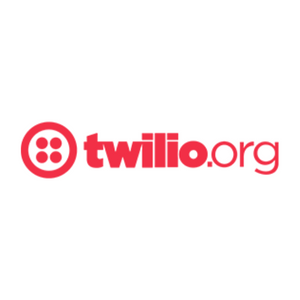Insights
INSIGHTS
All Topics
My Account
How to reach your service users during the cost-of-living crisis
31 Aug 2022by Laura Stanley
We look at the growing gap between charities who adopt new digital communication channels to reach their audiences and those that don’t
There are many different paths to take when it comes to digital transformation and all charities are at different stages of their journey. Most have adopted digital in some aspect of their operations, whether it’s delivering services or keeping an eye on their finances, but there are others who have yet to embed digital into their strategy at all.
The 2022 Charity Digital Skills report revealed that charities with a digital strategy in place decreased slightly from the previous year, with only 56% of organisations saying they had one.
There appears to be a growing gap between organisations that are digitally mature and those that aren’t. It’s something that communications platform Twilio has also noted in its 2022 study, The State of Nonprofit Digital Engagement.
According to Twilio, those who were further ahead in their digital journey were more likely to view digital communications as a priority, more likely to resource their technical teams accordingly, and more likely to place an emphasis on evolving the program participant experience for beneficiaries.
The study shows that nine in ten organisations see digital communications as critical to achieving their mission, but both charities and beneficiaries believe that they are not yet utilising them to their full extent.
Only half of nonprofits view their communications strategy as effective, while just 37% of program participants say digital communications are helping them to access services. Nearly double that number (72%) said that digital communications were important in order to achieve that aim.
Indeed, the growing gap is yet more concerning given that the report reveals that organisations that do incorporate digital engagement with their programme participants see immediate returns. These returns include improved staff productivity, increased awareness of their programs, more efficient and scalable program delivery, and a higher number of program participants served.
Almost half (45%) of nonprofits provided a better experience for their beneficiaries, thanks to digital engagement, while 43% saw better outcomes for them. Digital communications are vital for charities to be able to evolve and only some organisations are reaping the rewards.
Can other charities catch up?
Though there is a growing gap between those pulling ahead with digital and those falling behind, it’s not caused by a lack of trying. In its report, Twilio.org details the characteristics of organisations at various stages of digital communications maturity.
Those developing digital skills or at the beginning of their journey also recognised the importance of better digital communications with program participants in Twilio’s report. Four in five said that they were critical to their mission (96% of digital leaders said the same).
But whatever stage organisations are currently at, investing in digital communications for their program participants will always be crucial to their future success. Three quarters of organisations say they plan to invest more in digital communications technology in 2022, including 92% of digital leaders.
Funding is a challenge but with grant funds available, including through the Twilio.org Impact Fund, charities should be able to secure the help they need to grow their comms strategy and improve how they engage with their audience. It’s not always easy, but it is well worth the effort.
For example, fundraising for technology adoption can be most effective when charities form a partnerships with their suppliers, as Tarjimly, a non-profit that serves refugees, did with Twilio. Twilio’s tech is now used in Tarjimly’s programme delivery.
Creating a long-term strategy for technology is also important for charities looking to gain funding for it. It shows funders your commitment to embedding digital and that the solutions you choose won’t be a flash in the pan, thus ensuring more long-term support.
Though lack of resources and funding will always be a factor in how quickly an organisation is able to fully embrace digital technology, being able to meet your audiences where they are is equally important when it comes to effective communications. This way, charities are reaching more people, more efficiently, with only relevant and targeted communications. Not a word is wasted.
The report identifies digital leaders from across the sector who are already using this strategy, such as civil rights charity Democracy Works, which used SMS to send voter registration forms and maps of the local polling place to eligible voters, encouraging them to vote. Part of what made Democracy Work’s work so effective is that they understood the channels of the people they were trying to connect with.
Twilio points to another example of this from Debt Free London, a charity that offers free, impartial advice about debt. In 2020, like many charities, Debt Free London had to close its physical advice centres. In order to keep meeting demand for their services, they needed to do so remotely, keeping in contact with its 21 partner organisations across the city.
Working with Twilio, Debt Free London built a technical solution without needing a vast in-house technical team. It was able to deploy a modern contact centre within days, distributing messages through multiple channels including video, WhatsApp, email, Facebook Messenger and SMS.
“Thanks to their new digital freedom and accessibility, Debt Free London was able to hire more staff and dramatically extend their opening times to be available 24/7, helping more people in the UK with free financial advice when they need it most,” the report concludes.
The charity sector already understands the importance of communicating digitally with their program participants – many have already seen the pay-off. But the next step is bringing all charities to the same level. It requires investment, but most importantly, a clear understanding of who they’re trying to reach.
Find out more about adopting new channels
Click above to download The State of Nonprofit Digital Engagement report and discover how better communications can help your cause
Laura Stanley
More on this topic
Recommended Products
Recommended Products
21 Feb 2025by Ioan Marc Jones
How charities stopped centring service users
19 Feb 2025by Laura Stanley
Marketing trends for charities in 2025
17 Feb 2025by Laura Stanley
Charity Digital Exchange: Grow your charity with AWS
Our Events
Charity Digital Academy
Our courses aim, in just three hours, to enhance soft skills and hard skills, boost your knowledge of finance and artificial intelligence, and supercharge your digital capabilities. Check out some of the incredible options by clicking here.




















